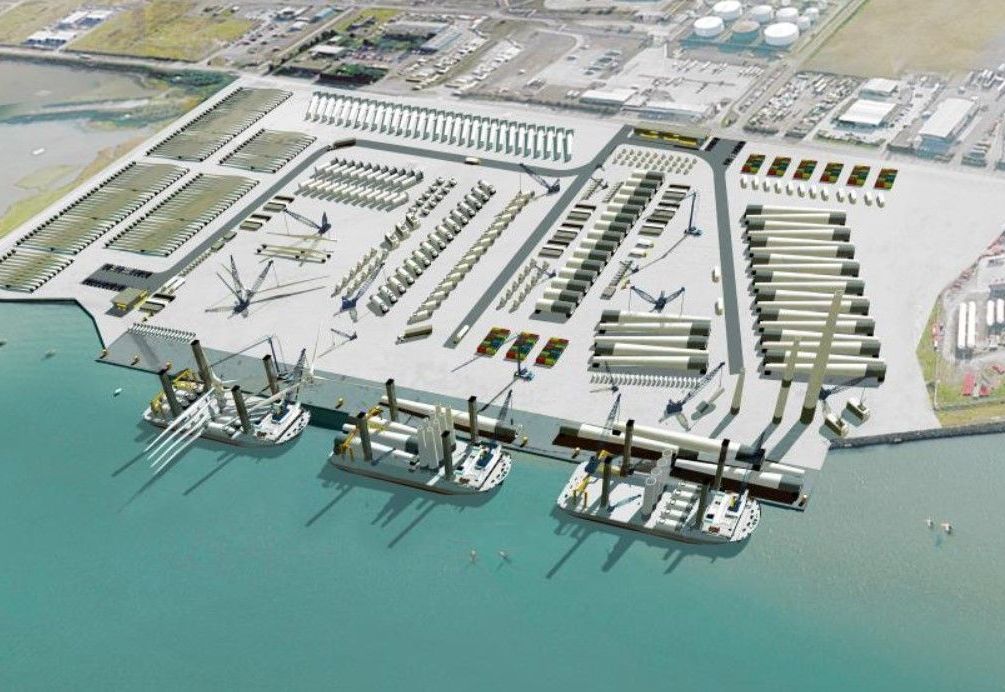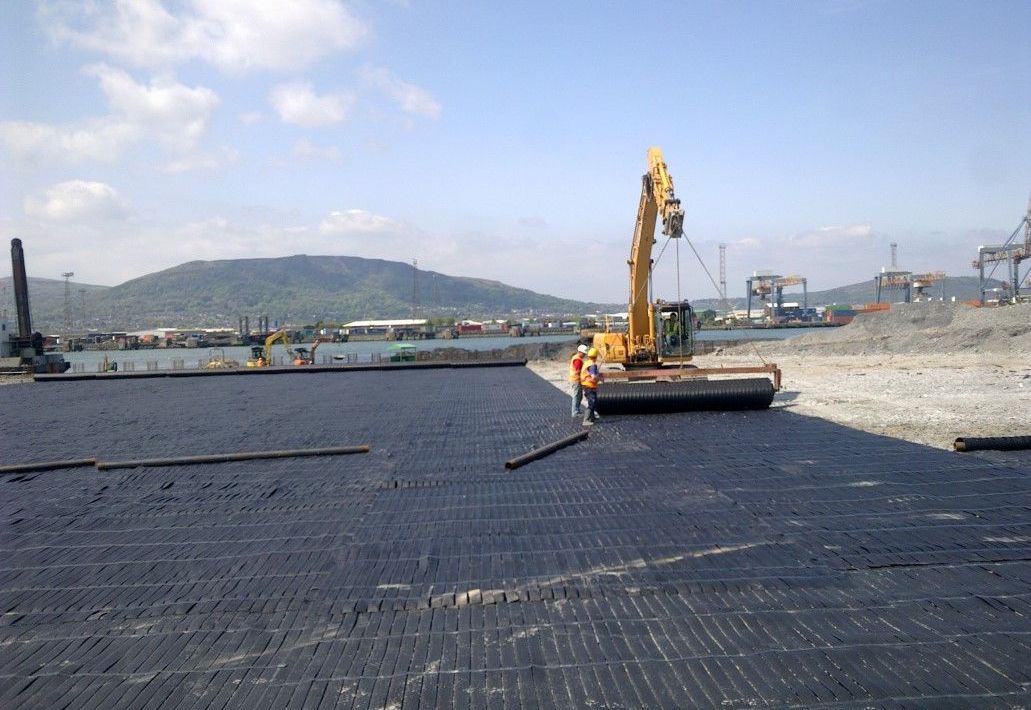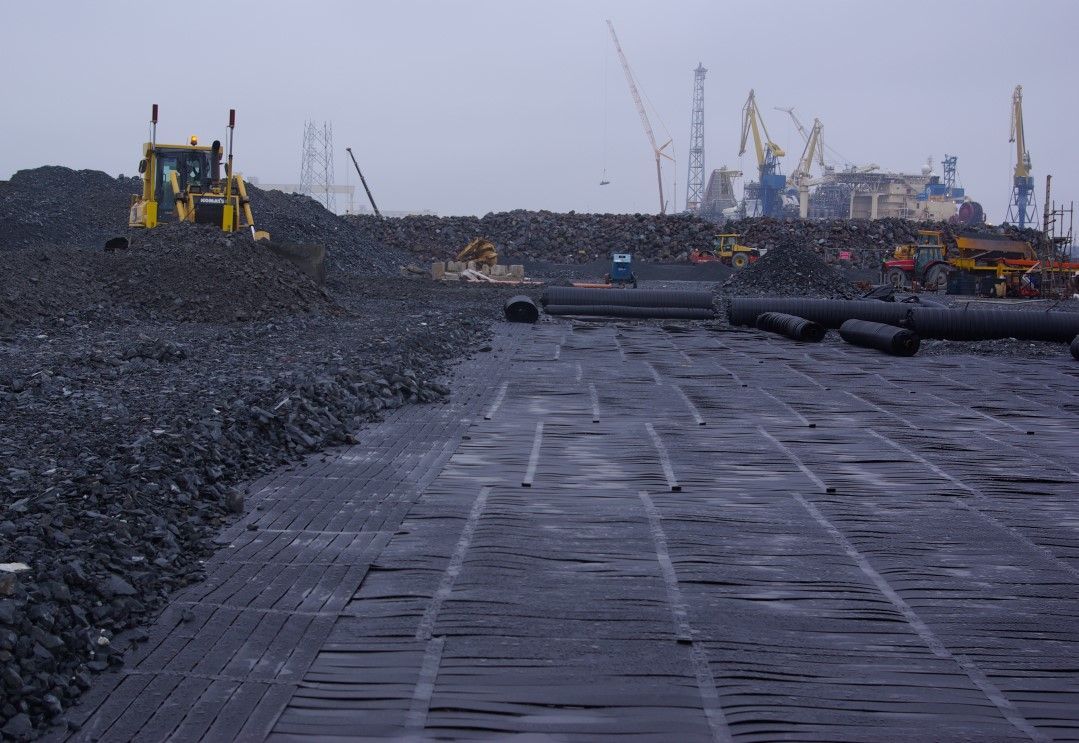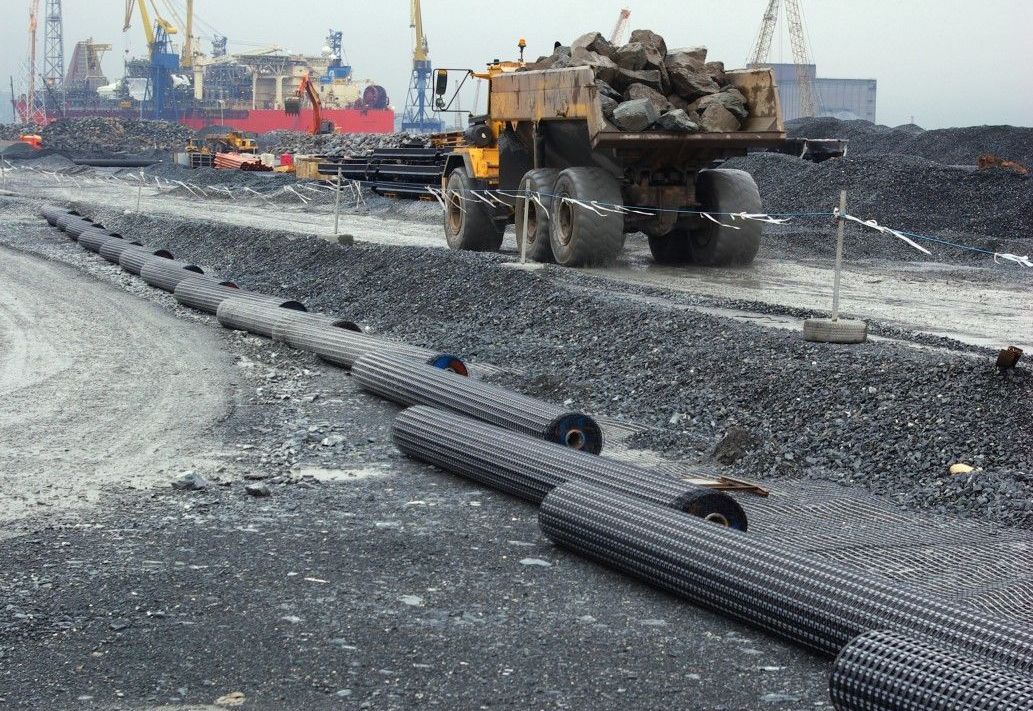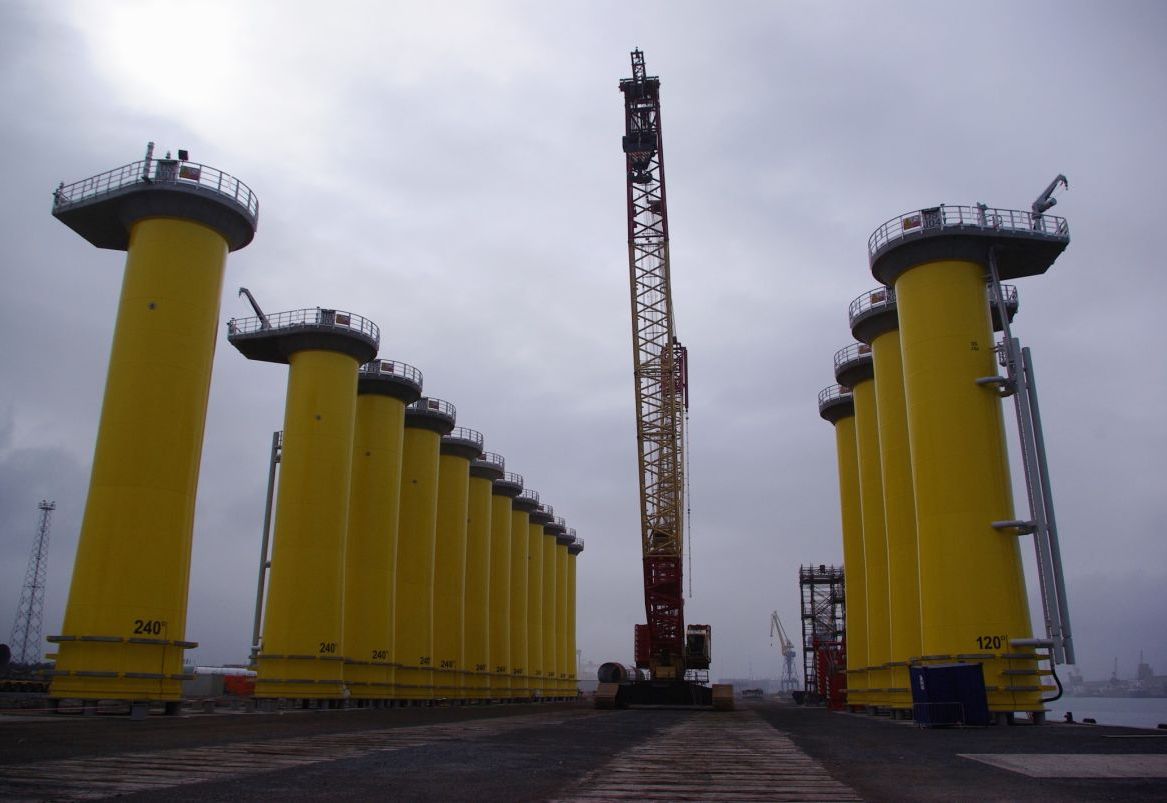Basal Reinforcement
BELFAST - NORTHEN IRELAND - United Kingdom
BELFAST HARBOUR AUTHORITIES, DONG ENERGY and SCOTTISH POWER RENEWABLES
Farrans construction
Doran Consulting
BELFAST HARBOUR
Problem
The construction of a 480m long new quay structure and deep water berth located in the Port of Belfast has required heavy use of geosynthetics. Ground conditions at a 50-acre wasteland site at Belfast Harbour were so poor that a major programme of stabilisation and improvement was required to allow the construction of a £50m trans-shipment and storage facility required to support the offshore wind industry.
The riverside site which is next to Belfast’s George Best Airport and close to the City’s Titanic Quarter is the largest in the Harbour’s 400-year history. The project was part of a joint venture between Dong Energy and Scottish Power Renewables to support the construction of the West of Duddon offshore wind farm.
Stabilisation and strengthening of the upper ground formations were needed as the facility was to be used for the off-lading storage and assembly of huge wind turbine components. Large tracked cranes were used to move equipment and materials about the site and at full capacity imposed extreme loads on the surface.
The quay wall was constructed using a combi wall of 1600mm diam. 32m long tubes and 22mm sheet piles tied back and anchor beam supported on 376no. 30m long raking tubes. The 17,000 sqm quay slab was supported also by 780no. 750mm dia CFA piles.
Solution
The works included dregging of the new berth and approaches. This involved the disposal of 500,000m3 of material to sea with treatment and disposal of some contaminated material to land. Behind the new quay, there are 50 acres of hinterland to receive heavy-duty unbound pavement involving the placement of more than 900,000 sqm of geosynthetics and the import of circa 1,000,000 tonnes of aggregate.
With this in mind, engineers devised a scheme which involved surface build-up of up to 2m depth in places using a combination of site-won fill and over 250,000 tonnes of imported stone. This was placed in layers over an array of Maccaferri Paralink®, basal reinforcement high strength geogrid approximately 1.3m below the finished surface.


